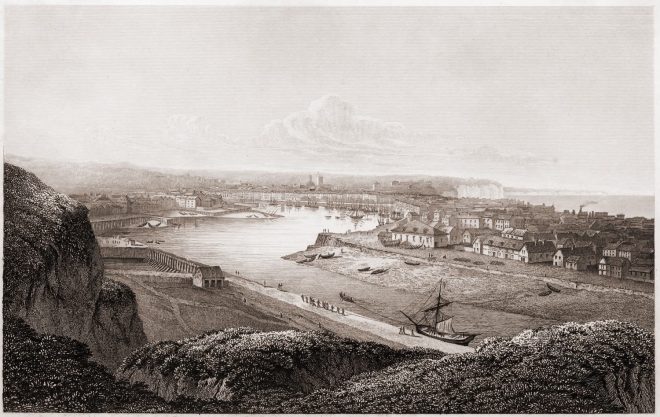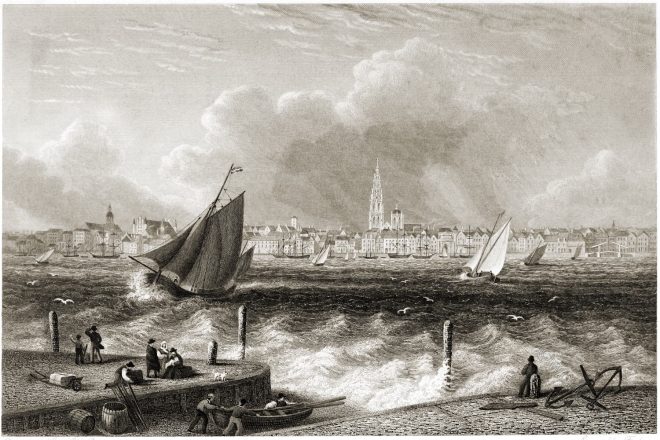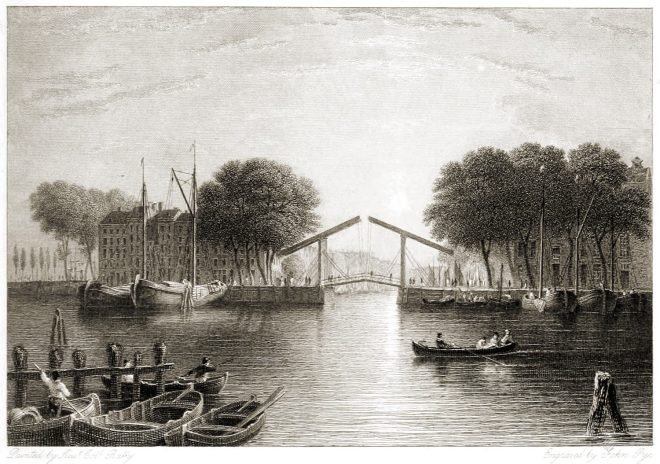It is from Côte Sainte-Catherine that one can enjoy a remarkable panorama of Rouen and its urban area.
Tag: Grand Tour
The Grand Tour, also known as the Cavaliers’ Tour, was the name given to an obligatory journey undertaken since the Renaissance by the sons of the European nobility, later also by the upper middle classes, through Central Europe, Italy, Spain and also to the Holy Land. In England in particular, the Grand Tour found rich literary expression in the 18th century.
The Harbor of Dieppe from the hotel of M. Petit.
Looking out from the hotel opposite the quay, we enjoy an extremely picturesque view of the lively port of Dieppe with its sailing ships.
The port city of Dieppe in Haut-Normandie.
Dieppe is a maritime and fishing port on the Alabaster Coast in the Seine-Maritime department in the Normandy region
View of Antwerp from the Tête de Flandre, opposite to the city.
The annexed view of Antwerp is taken from the Tête de Flandre, a fortified post on the left bank of the river Schelde
The Grande Place, or principal market-place of Brussels.
The Grande Place, or principal market-place of Brussels, is situated in the centre of the city. It is enclosed by large and handsome buildings of various styles of architecture.
Brussels from the Hotel de Bellevue, with the Parc de Bruxelles.
The accompanying view is taken from the Hotel de Bellevue, situated between the Place Royale and the Parc de Bruxelles, in the upper portion of the city of Brussels
City of Amsterdam, view on the Cingel, Netherlands 1832.
The Cingel is the innermost of four large and nearly parallel canals, which, following the crescent-shape boundary of the city of Amsterdam
Amsterdam. The Damrak Palace &c. rendered very picturesque.
Select views of some of the principal cities of Europe by Robert Batty. London: Moon, Boys, and Graves, 1832.
Rotterdam, the Oude Haven. General characteristic of Dutch cities.
The annexed scene of the Oude Haven, in Rotterdam, has been selected as an epitome of the general characteristics of Dutch cities.
Oporto. View of the city and the Douro River from Fontainhas.
View of the city and the Douro River from the verge of the granite precipice on the north side of the Douro.










